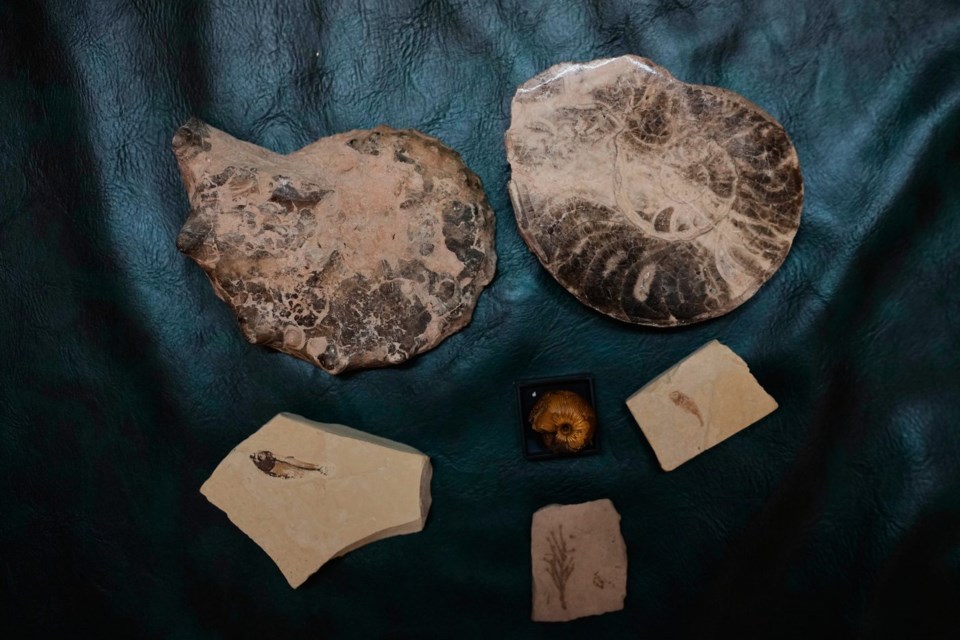NEW DELHI (AP) ŌĆö Cameras from a bygone era. Rusty typewriters. Vintage radios. Matchboxes once used to light contraband cigarettes.
In an age of new technology and artificial intelligence, a visit to the home of Aditya Vij is like stepping into a time machine. Every corner of his museum feels like a carefully constructed history chapter.
The anthropologist is an avid collector of artifacts and has dedicated his life to antiquities. Over decades, he has doggedly collected thousands of items that span several centuries and documented their relevance and the impact they have had on society.
Each collectable he has salvaged feels like a victory against time, Vij says, underscoring his belief that maybe one individual's attempts can quietly resist their erasure from peopleŌĆÖs memory.
ŌĆ£The deepest emotion I feel while collecting these items is the sense of satisfaction that I managed to save a piece of history,ŌĆØ said Vij, during an interview surrounded by his priceless collection of vintage cameras and gramophones.
The excitement of the hunt
Fossils of fish, snails, tadpoles and fern leaves that date back millions of years are Vij's most ancient items. But he has a passion for another trove of objects that date back to around 1915: thousands upon thousands of matchboxes.
His obsession began at the age of 8 when he discovered his first matchbox while wandering on the roads with his father. Today, the 51-year-old possesses more than 22,000 matchboxes.
A few of them are over a century old and their cover labels showcase different forms of religious representations and political scenarios of the times they were produced.
ŌĆ£It is not just the possession of these trinkets, but the process of hunting for them is what adds a layer of excitement for me,ŌĆØ Vij said, adding that matchboxes symbolize different cultures at different times.
'Vigilance and quick action'
He says the preservation of memory through these collectables pushes people to think about the craftsmanship of a time where life was slower and decisions were more deliberate.
Some of his possessions were acquired by a chance.
Many years ago, Vij says, he spotted a scrap dealer about to break an old radio with a hammer. He shouted from across the street and stopped the man. The scrap dealer, taken by surprise, explained how he would get good money out of the parts. Vij offered to buy it. Today, that radio sits amongst his existing collection of vintages.
ŌĆ£Thirty more seconds and I would have lost it, and sometimes thatŌĆÖs what it takes ŌĆö vigilance and quick action,ŌĆØ he said.
Vij describes his journey that of a man "who links the past to the future" and aspires to create a museum out of his house that will act as a physical space where younger generations get to learn about innovations from the past.
Otherwise, Vij says, these unassuming objects would be forever lost in the vast expanse of new technology.
ŌĆ£What was once familiar has become rare, often forgotten, and has left behind only traces of nostalgia and memories," he said.
ŌĆśUrgency to preserve historyŌĆÖ
Vij also gets requests from parents who want him to show their children how his collectables were put in use during the past. Some want their children to see how a typewriter works, or how pictures were clicked using a film camera.
Others come to see how some household devices used to operate, like the rotary telephones, tube radios, pressing irons, ice cream makers, and lanterns.
ŌĆ£When they (kids) tell me how they had no idea about the existence of these objects, that is when I feel a stronger urgency to preserve history," he said.
Over the past few years, Vij says, technology has evolved rapidly and the gadgets from his childhood were made obsolete overnight. He believes archiving them is necessary.
"I hope the younger generations realize the importance of history and carry it forward by preserving it,ŌĆØ he said
Verda Subzwari, The Associated Press




